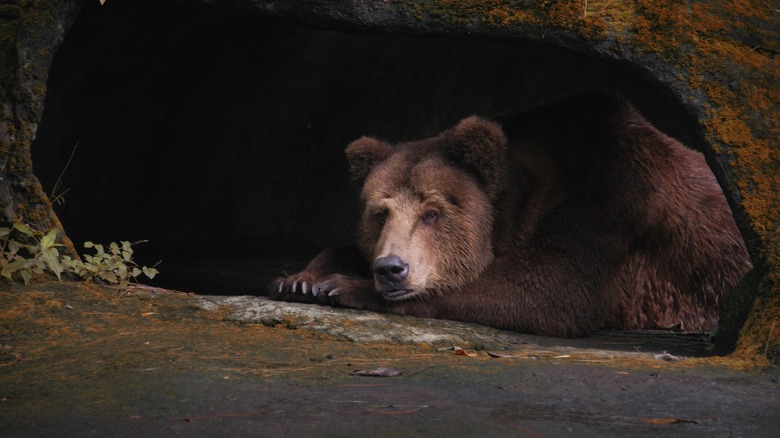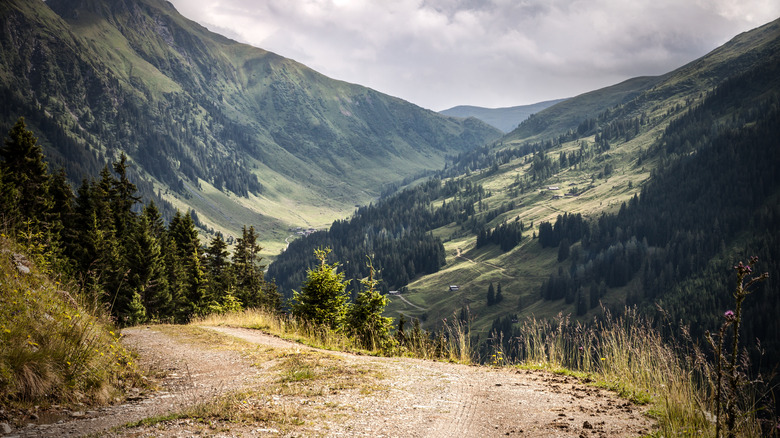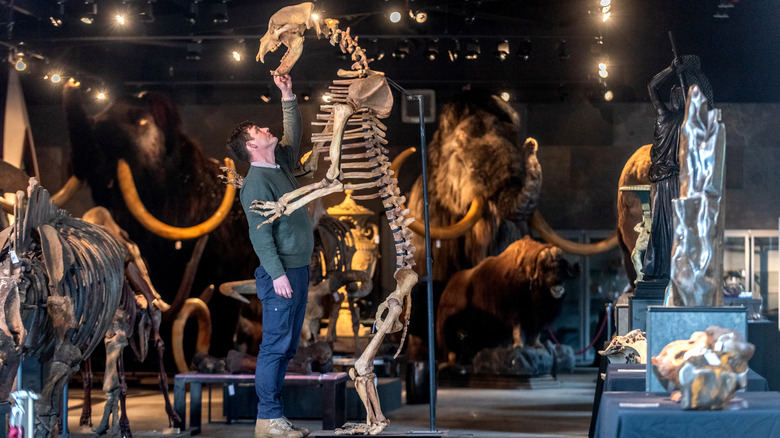The Real Reason The Cave Bear Went Extinct
No, a "cave bear" isn't a bear that hangs out in a cave. That's the brown and black bears that dig dens for themselves if they can't find real rocky enclosures. Caves bears — formally Ursus spelaeus — were one of the megafauna (big animal species) that went extinct toward the end of the last Ice Age. Other notable species include the familiar mastodons, mammoths, giant sloths, saber-toothed cats, etc. Cave bears were the bear version of the "modern animal, but bigger" evolutionary trend that yielded our current-day animal analogues.
But no matter how imposing or not, cave bears went extinct along with the other megafauna. On the surface, it's not too hard to see why. Earth stayed in an Ice Age all the way from 2.6 million years ago to the very recent geological past at 11,700 years ago (about 10,000 B.C.E., give or take). Better known as the Pleistocene Epoch, this geological time saw Earth coated in glaciers all the way from the poles down to modern-day Missouri and Illinois. Thirty percent of Earth's surface was covered in these ice masses during this period.
Earth underwent rapid heating around 11,700 years ago as part of its natural geological cycles and the climate change leading up to then. Naturally, this didn't bode well for animals used to a particular environment. Also, that's non-coincidentally around the time when some brave, hungry apes started venturing forth across glacier-less continents, hunting and domesticating plants. Cave bears went extinct before then, though, meaning that it was the cold that killed them.
Cave bears roamed all across Europe
During the Pleistocene Epoch's Last Glacial Maximum (LGM), the Earth's ice sheets were at their maximum size and furthest toward the equator. Spanning about 26,000 to 19,000 years ago, the LGM saw the Laurentide Ice Sheet cover much of North America and the Scandinavian Ice Sheet envelope a lot of Europe. According to Visual Capitalist, temperatures were about 11 degrees colder than they are now, and because glaciers had yet to melt, the sea level was about 400 feet lower.
Cave bears didn't live on the North American continent during the Pleistocene Epoch, but all across Europe. Their remains have been found from England across to Russia, down to Italy and Spain and even into North Africa. Such a widespread habitat indicates that they were a pretty successful, adaptable species. Come winter time, they did as modern bears did and fled to caves to hibernate. This is where we find most of their fossils, as those that died tended to do so during hibernation. Most of these bears, however, tended to be old or sick.
There's evidence that some brave and/or desperate hunter-gathered humans targeted bears to eat instead of, let's say, rabbits. But, these animals would have never been the easiest prey, and they probably weren't worth the fight. It's unlikely that humans had much to do with their extinction.
Global warming killed off the cave bears
Despite being bears — and people probably thinking, "Hey, bears are tough" — it seems like cave bears were a bit more fragile than we might think. Or at least, Earth heated up toward the end of the last Ice Age more quickly than glacially slow biological evolution could keep up. Cave bears had somewhat thin skulls to give their sinuses more space so they could survive during super cold Ice Age winters in hibernation. A thinner skull meant a weaker bite force, which limited their diet to foods that eventually couldn't sustain their caloric and dietary needs. This is especially true because fossils indicate that cave bears weren't omnivorous like brown or black bears, and certainly not carnivorous like polar bears — they were likely largely herbivores. This is true even though cave bears were 30% larger than the largest contemporary bears, Kodiak grizzly bears, and weighed up to 2,200 pounds vs. a Kodiak's 1,500 pounds.
Like other megafauna of the time that went extinct, the cave bear's size created a liability, or fragility, when changes occurred in the ecosystem. This is especially true for a massive herbivore that must have spent much of its day grazing — grazing for plants undergoing rapid change and dwindling, no less. As Earth started to slip out of the Pleistocene Epoch and enter the modern-day Holocene Epoch, cave bears went extinct from 28,000 to 27,000 years ago.


